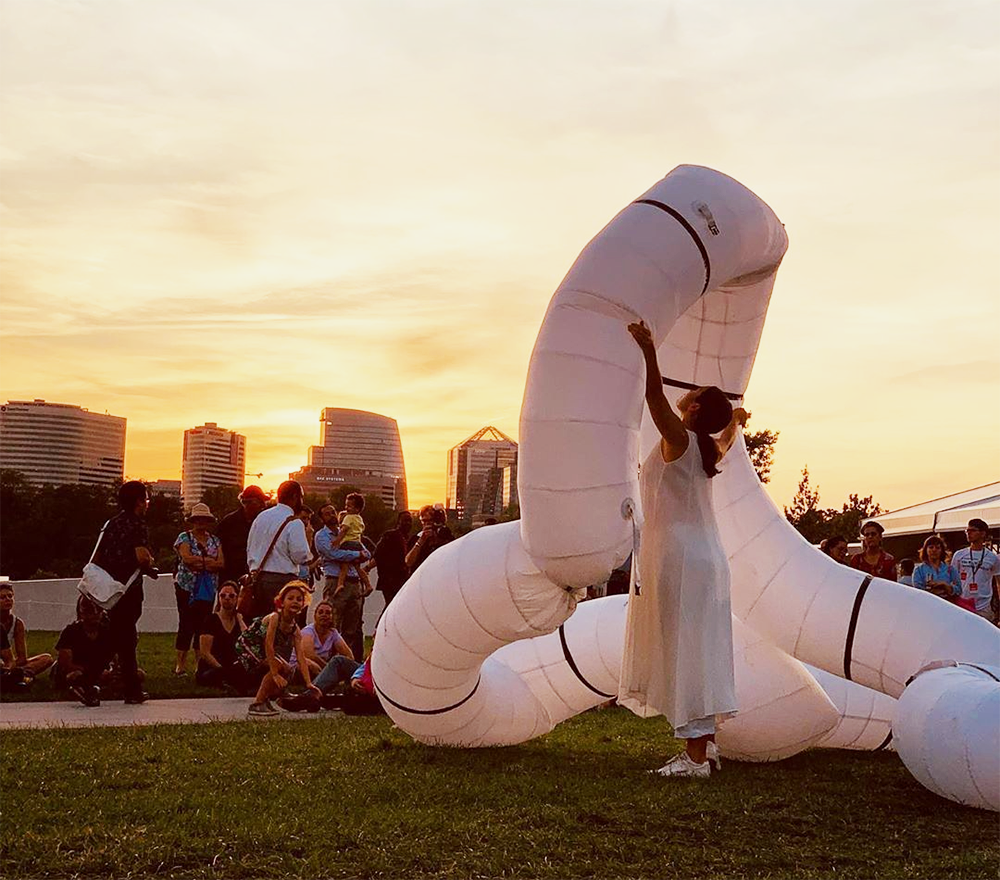The John F. Kennedy Center for the Performing Arts will debut the Reach, its first major expansion since its opening in 1971, kicking off with a two-week-long festival that began last Saturday.
The Reach is an immersive arts center constructed in the green space next to the Kennedy Center building, containing three pavilions, an outdoor stage and 11 flexible spaces, which will be used for performances, events and classes.
The Kennedy Center is hosting the Reach Opening Festival from Sept. 7-22. The festival will include nearly 500 free events, including concerts and art installations, according to the festival website. Programming will be free, but festival attendees must obtain timed-entry tickets.

The Reach’s spaces and events are designed to foster organic collaboration and encourage artistic inspiration, according to Kennedy Center Director of Public Relations Rachelle Roe.
“We could have a ballet company in one of the rooms who takes a break and then they bump into a jazz artist who they’ve always admired coming out of rehearsal and some new piece of art might happen because of it,” Roe said in an interview with The Hoya. “The whole idea is for that flexibility and that inspiration to happen in these spaces.”
Each day of the opening festival schedule offers a variety of activities, ranging from a “Spotlight on Classical and Broadway” orchestral performance of Alan Menken songs to a “Hip Hop Block Party,” an all-day celebration of hip hop music. The diverse lineup of artists and musicians reflects the variety of Kennedy Center offerings, Roe said.
“The Kennedy Center offers so many different genres, everything from comedy and hip hop and jazz and orchestras and operas and ballet and theater,” Roe said. “It’s such a huge range — we tried to take a little bit of everything.”
After the festival ends, the Reach will regularly host performances, films and art installations, along with other community events.
The Reach will be an active space where visitors can also interact with artists and find themselves surrounded by art in progress, Kennedy Center President Deborah Rutter wrote in a news release.
“More and more, today’s audiences crave connection — with art and with each other — while artists and arts organizations desire customized spaces that nurture their creative endeavors,” Rutter wrote. “The Reach will fulfill many of those needs, all within a one-of-a-kind design that is a work of art in and of itself.”
The community has responded enthusiastically to the center’s opening, according to Roe.
“The response has been great,” Roe said. “Last night, which was Wednesday, we had our largest evening crowd yet for the National Symphony Orchestra and Alan Menken came out and they did a whole bunch of his famous songs from Broadway and Disney movies and the response was really positive.”
The Reach expansion project was first announced in January 2013. The $250 million expansion plan added pavilions and 130,000 square feet of gardens, as well as 72,000 square feet of interior space to house studios, performance and rehearsal spaces and learning centers. The Kennedy Center fundraised extensively to support the project, according to the Washington Business Journal.
Steven Holl Architects, the team that designed the expansion, intends for the additions to continue the center’s mission as a living memorial for President John F. Kennedy, according to its website. The landscape includes a grove of 35 ginkgo trees to signify Kennedy’s position as the 35th president.
The flexible outdoor space of The Reach complements the iconic, yet isolated, stone Edward Durell Building, according to Roe.
“The stone building is a very traditional concert hall type building with lots of activity that goes on behind closed doors and people come and they see a performance and its very polished and then that’s it,” Roe said. “The Reach is designed to sort of turn this building inside out and to be able to show what goes on behind closed doors over here.”
Georgetown University and the Kennedy Center introduced a new partnership last fall: the Georgetown-Kennedy Center Seminar Series. Students in the seminar attended three shows at the Kennedy Center for free and engaged in post-performance discussions with professors centered around a specific theme.
The program is set to be relaunched in the spring of 2019 as a one-credit course titled, “Encounters in Global Performance.” In addition to the three free shows and discussions, the course will culminate with a student presentation at the Kennedy Center Arts Summit.
The Reach was inspired by Kennedy’s vision for art and artists to be more accessible to the community, Kennedy Center Chairman David Rubenstein wrote in a news release.
“The Reach is a one-of-a-kind building, and we see it as a ‘forever building,’ not simply because we want it to be around for a long time, but because there is a memorial aspect to our work here at the Kennedy Center,” Rubenstein wrote. “We are President Kennedy’s living memorial, and we take that responsibility very seriously.”




















